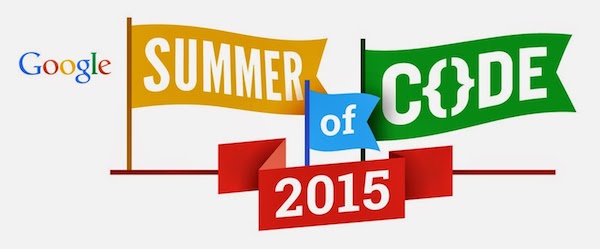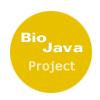| Please visit our ***NEW*** OBF/BOSC website: https://www.open-bio.org/ |
-
Difference between revisions of "Google Summer of Code"
(→Scientific Achievements) |
(→Scientific Achievements: Adding a slew of BioJava publications from google scholar) |
||
| Line 188: | Line 188: | ||
* [http://www.open-bio.org/wiki/Google_Summer_of_Code_2014#Loris_Cro vcf-mongo ]: Gene2Farm and WHEALBI European Research projects | * [http://www.open-bio.org/wiki/Google_Summer_of_Code_2014#Loris_Cro vcf-mongo ]: Gene2Farm and WHEALBI European Research projects | ||
* [http://news.open-bio.org/news/2015/02/obf-gsoc-2014-wrapup/ OBF-GSoC-2014-WrapUp] is rich of science activities and results. | * [http://news.open-bio.org/news/2015/02/obf-gsoc-2014-wrapup/ OBF-GSoC-2014-WrapUp] is rich of science activities and results. | ||
| + | * [http://www.rcsb.org RCSB PDB] is the north american access point to the world wide protein data bank, and uses BioJava extensively | ||
| + | * Publications using BioJava: | ||
| + | ** Prlić, Andreas, et al. "BioJava: an open-source framework for bioinformatics in 2012." Bioinformatics 28.20 (2012): 2693-2695. | ||
| + | ** Holland, Richard CG, et al. "BioJava: an open-source framework for bioinformatics." Bioinformatics 24.18 (2008): 2096-2097. | ||
| + | ** Pocock, Matthew, Thomas Down, and Tim Hubbard. "BioJava: open source components for bioinformatics." ACM Sigbio Newsletter 20.2 (2000): 10-12. | ||
| + | *** 181 citations on Google Scholar | ||
| + | ** Myers-Turnbull, Douglas, et al. "Systematic Detection of Internal Symmetry in Proteins Using CE-Symm." Journal of Molecular Biology, (2014) 426:11 pp. 2255–2268. | ||
| + | ** Prlić, Andreas, et al. (2010) “Precalculated Protein Structure Alignments at the RCSB PDB website.” Bioinformatics 26(23), 2983-2985 | ||
| + | ** Bliven, Spencer, et al. (2015) "Detection of circular permutations within protein structures using CE-CP Bioinformatics." Bioinformatics. In press. | ||
| + | ** Aerts, Stein, et al. "Toucan: deciphering the cis‐regulatory logic of coregulated genes." Nucleic acids research 31.6 (2003): 1753-1764. | ||
| + | ** Vaida, Mircea-Florin, Radu Terec, and Lenuta Alboaie. "Alternative DNA Security Using BioJava." Digital Information and Communication Technology and Its Applications. Springer Berlin Heidelberg, 2011. 455-469. | ||
| + | ** Ross, Christian, and Qingxi J. Shen. "Computational prediction and experimental verification of HVA1-like abscisic acid responsive promoters in rice (Oryza sativa)." Plant molecular biology 62.1-2 (2006): 233-246. | ||
| + | ** Finak, G., et al. "BIAS: bioinformatics integrated application software." Bioinformatics 21.8 (2005): 1745-1746. | ||
| + | ** Aerts, Stein, et al. "A genetic algorithm for the detection of new cis-regulatory modules in sets of coregulated genes." Bioinformatics 20.12 (2004): 1974-1976. | ||
| + | ** Hanganu, A. N. D. R. E. I., et al. "SLIDE: An interactive threading refinement tool for homology modeling." Rom J Biochem 1009.46: 123-127. | ||
| + | ** Kaladhar, DSVGK. "BioJava: A Programming Guide." (2012). LAP Lambert Academic Publishing , Germany. ISBN:3659167509 9783659167508 | ||
| + | ** Prins, J. C. P. "BioLib: Sharing high performance code between BioPerl, BioPython, BioRuby, R/Bioconductor and BioJAVA." 17th Annual International Conference on Intelligent Systems for Molecular Biology, Stockhol, Sweden, June 27-July 2, 2009. 2009. | ||
| + | ** Tang, Si-Xin, Yi-Bing Li, and Hong-Bo He. "Designing a BioJava-based Software for RNA Sequence Analysis." Journal of Luoyang Institute of Technology 6 (2005): 016. | ||
| + | ** Mangalam, Harry. "The Bio* toolkits—a brief overview." Briefings in bioinformatics 3.3 (2002): 296-302. | ||
| + | ** Ryu, Taewan. "Benchmarking of BioPerl, Perl, BioJava, Java, BioPython, and Python for primitive bioinformatics tasks and choosing a suitable language." International Journal of Contents 5.2 (2009): 6-15. | ||
| + | ** McGuffee, James W. "Programming languages and the biological sciences." Journal of Computing Sciences in Colleges 22.4 (2007): 178-183. | ||
== Previous Years == | == Previous Years == | ||
Revision as of 08:56, 24 February 2015
Google Summer of Code (GSoC) is a student internship program for open-source projects. The program offers eligible student developers stipends to write code for open source projects over a period of 3 summer months ("flip bits, not burgers"). See the Google Summer of Code Main Site for general information about the Google Summer of Code program, how to apply, frequently asked general questions, and more.
Contents
GSoC 2015
The Google Summer of Code 2015 is ON! OBF is once again serving as a GSoC mentoring organization this year. Interested mentors and students should subscribe to the OBF/GSoC mailing list. Please announce yourself, so we know who you are! The details of each of our project ideas are listed below, including potential mentors.
Facts & Links
- Time Line
- GSoC 2015 FAQ
-
- For questions of eligibility, see the GSoC 2015 FAQ.
- Info from Google
-
- There is also a Google group for posting GSoC questions (and receiving answers; note that you will need to sign up for the group) that relate to the program itself (and are not specific to our organization).
- Students receive a stipend from Google if accepted. See the GSoC 2015 FAQ for full documentation.
- Development is done entirely remotely and on-line; there is no requirement or expectation for either students or mentors to travel.
Why apply?
One of the most important features of the program is that students are paired with mentors, who are typically experienced developers from the project to which the student is contributing. The mentor guides the student to work productively within the community, and helps the student avoid obstacles and pitfalls. The program is global - students and mentors may be located anywhere where they have an internet connection (except for countries affected by US trade restrictions), and no travel is required. Thus, aside from the stipend and mentorship aspects, the student's experience in the internship closely mirrors normal work on distributed development projects. Effective work habits for distributed development are typically not taught as part of computer science curricula, yet are highly desired in the increasingly global and distributed software, IT, and biotechnology industries.
From the viewpoint of each open-source project, the program not only offers to pay students for contributing, but more importantly, offers an opportunity to recruit new developers who will hopefully go on to become regular, sustaining contributors.
Project Ideas
Our GSoC ideas from each project are collected here: OBF Project Ideas for GSoC 2015
OBF Projects Accepting Applicants
- BioPerl
-
- BioPerl GSoC Page - project ideas and mentors
- Project website
- Information for new developers
- source code browser for bioperl-live (the main BioPerl code base), and all BioPerl sub-projects
- Priority list of things that need work, as another source for student-conceived project ideas
- Mailing lists
- IRC:
#bioperlon Freenode
- BioPython
-
- BioPython GSoC Page - project ideas and mentors
- Project website
- Information for contributors
- Mailing lists
- Source Code
- No IRC channel at present
- BioJava
-
- BioJava GSoC Page - project ideas and mentors
- BioJava modules as another source for student-conceived project ideas
- source code for biojava-live (the main BioJava code base) and all BioJava sub-projects
- Mailing lists
- No IRC channel at present
- BioRuby
-
- BioRuby GSoC Page - project ideas and mentors
- Project website
- developers mailing list
- source code
- IRC:
#biorubyon Freenode
- BioSQL
-
- Project website
- Current enhancement requests as another source for student-conceived project ideas
- developers mailing list
- source code
- No IRC channel at present
Guide for prospective GSoC students
Before you apply
- Proposals should extend one of affiliated toolkits, not start a new project.
- If you want to apply with your own idea, it's best to contact the OBF subproject you're interested in well before the application deadline, so we can work with you to find a mentor and solidify your project idea and application.
- Ask us questions on the subproject mailing lists about the project idea you have in mind.
- Write a project proposal draft, include a project plan (see below), and send it to a project mailing list for comments before submitting it.
Again, students are strongly encouraged to contact us as early as possible. Frequent and early communication is extremely valuable for putting together successful projects.
When you apply
When applying, (aside from the information requested by Google) please provide the following in your application material.
- Your complete contact information, including full name, physical address, preferred email address, and telephone number, plus other pertinent contact information such as IRC handles, etc.
- Why you are interested in the project you are proposing and are well-suited to undertake it.
- A summary of your programming experience and skills.
- Programs or projects you have previously authored or contributed to, in particular those available as open-source, including, if applicable, any past Summer of Code involvement.
- A project plan for the project you are proposing, even if your proposed project is directly based on one of the proposed project ideas for member projects.
- A project plan in principle divides up the whole project into a series of manageable milestones and time-lines that, when all accomplished, logically lead to the end goal(s) of the project. Put in another way, a project plan explains what you expect you will need to be doing, and what you expect you need to have accomplished, at which time, so that at the end you reach the goals of the project.
- Do not take this part lightly. A compelling plan takes a significant amount of work. Empirically, applications with no or a hastily composed project plan have not been competitive, and a more thorough project plan can easily make an applicant out compete another with more advanced skills.
- A good plan will require you to thoroughly think about the project itself and how one might want to go about the work.
- We don't expect you to have all the experience, background, and knowledge to come up with the final, real work plan on your own at the time you apply. We do expect your plan to demonstrate, however, that you have made the effort and thoroughly dissected the goals into tasks and successive accomplishments that make sense.
- We strongly recommend that you bounce your proposed project and your project plan draft off of us, using either the pertinent developers mailing list or the IRC channel(s). Through the project plan exercise you will inevitably discover that you are missing a lot of the pieces - we are there to help you fill those in as best as we can.
- Any obligations, vacations, or plans for the summer that may require scheduling during the GSoC work period.
- We expect the your GSoC project to be your primary focus over the summer. It should not be regarded as a part-time occupation.
- If you feel that you can manage other work obligations concurrently with your Summer of Code project, make your case and support it with evidence.
- Be honest and open. If it turns out later that you weren't clear about other obligations, at best (i.e., if your accomplishment record at that point is spotless) our trust in you will be severely degraded. Also, if you are accepted, discuss with your GSoC mentor before taking on additional obligations.
- One of the most common reasons for students to struggle or fail is being overcommitted. Do not set yourself up for failure! GSoC summers should be fun and rewarding!
Student Progress Reports
In addition to writing code, accepted students send weekly updates to the OBF community on their project's progress. These updates allow us to keep aware of how GSoC students are doing, give students a forum to ask any questions, and promote overall community bonding.
At the beginning of the summer, we ask that you set up a blog for the GSoC project (or a category/tag on your existing blog) which you will use to summarize your progress every week, as well as longer posts about your work if you'd like. (See these examples from 2013.)
Then, at the start of each week:
- Post an update on your blog: What did you do last week? What do you plan to do this week? Do you have any unanswered questions, any unsolved problems from the last week, interesting observations or anything else you'd like to mention?
- Email the URL and text of the post (or a short summary) to the host project's mailing list (your mentors will confirm which one to use) and the main OBF GSoC mailing list (gsoc@lists.open-bio.org).
You will be writing under your own name, but with a clear association with your mentors, the OBF and its projects, so please take this seriously and be professional. Remember that your blog will be one of the first things found by anyone interested in the project you're working on, and can be a valuable resource to them — as well as a significant part of your online presence.
Contact
Before applying, please read our documentation on information that students should know and guidelines we expect you to follow. We also require that you include certain information, listed below, under "When you apply."
Staff and org Admins
- Organization administrator
- Eric Talevich (eric.talevich@gmail.com)
- Backup administrator
- Raoul Bonnal (email) (IRC: helius | channels: #obf-soc, #bioruby, #gsoc ) (Skype: ilpuccio)
Google Plus
OBF Summer of Code on G+
For prospective students, the first point of contact should be the mailing list of the OBF project you are interested in working with:
- BioPerl
- bioperl-l@lists.open-bio.org
- BioPython
- biopython@lists.open-bio.org
- BioJava
- biojava-l@lists.open-bio.org
- BioRuby
- bioruby@lists.open-bio.org
- BioSQL
- biosql-l@lists.open-bio.org
- BioLib
- biolib-dev@lists.open-bio.org
Also, it would be a good idea to CC the organization administrator (Eric Talevich, eric.talevich@gmail.com), so he can make sure that you are properly taken care of!
If you are not quite sure which project you would like to contribute to, you can email to the organization administrator for help. However, do not worry overly much about picking the right OBF project at the outset. If you are unsure, simply make your best guess, and other members of the email list will help you to find the best organization to suit your idea.
IRC - Internet Relay Chat
OBF IRC channels are maintained on freenode, connect your IRC client to chat.freenode.net.
- Main OBF GSoC Channel
-
#obf-soc - BioPerl
-
#bioperl - BioRuby
-
#bioruby
Some mentors and developers can regularly be found on IRC, see the list of OBF projects below for information on which projects have a channel and the name of the channel. And/or join #obf-soc on Freenode. (If you do not have an IRC client installed, you might find the comparison on Wikipedia, the Google directory, or the IRC Reviews helpful. For Macs, X-Chat Aqua works pretty well. If you have never used IRC, try the IRC Primer at IRC Help, which also has links to lots of other material.)
Mentor Resources
Scientific Achievements
In this section we want to report all the scientific achievements of our community, scientific papers or grant funded project that used the tools developed during the Google Summer of Code over the years.
- Sambamba: fast processing of NGS alignment formats. Bioinformatics (2015) doi: 10.1093/bioinformatics/btv098 http://bioinformatics.oxfordjournals.org/cgi/content/abstract/btv098
- bio-maf: The long intergenic noncoding RNA landscape of human lymphocytes highlights the regulation of T cell differentiation by linc-MAF-4. Ranzani V et al. Nat Immunol. 2015 Mar;16(3):318-25. doi: 10.1038/ni.3093. Epub 2015 Jan 26.
- vcf-mongo : Gene2Farm and WHEALBI European Research projects
- OBF-GSoC-2014-WrapUp is rich of science activities and results.
- RCSB PDB is the north american access point to the world wide protein data bank, and uses BioJava extensively
- Publications using BioJava:
- Prlić, Andreas, et al. "BioJava: an open-source framework for bioinformatics in 2012." Bioinformatics 28.20 (2012): 2693-2695.
- Holland, Richard CG, et al. "BioJava: an open-source framework for bioinformatics." Bioinformatics 24.18 (2008): 2096-2097.
- Pocock, Matthew, Thomas Down, and Tim Hubbard. "BioJava: open source components for bioinformatics." ACM Sigbio Newsletter 20.2 (2000): 10-12.
- 181 citations on Google Scholar
- Myers-Turnbull, Douglas, et al. "Systematic Detection of Internal Symmetry in Proteins Using CE-Symm." Journal of Molecular Biology, (2014) 426:11 pp. 2255–2268.
- Prlić, Andreas, et al. (2010) “Precalculated Protein Structure Alignments at the RCSB PDB website.” Bioinformatics 26(23), 2983-2985
- Bliven, Spencer, et al. (2015) "Detection of circular permutations within protein structures using CE-CP Bioinformatics." Bioinformatics. In press.
- Aerts, Stein, et al. "Toucan: deciphering the cis‐regulatory logic of coregulated genes." Nucleic acids research 31.6 (2003): 1753-1764.
- Vaida, Mircea-Florin, Radu Terec, and Lenuta Alboaie. "Alternative DNA Security Using BioJava." Digital Information and Communication Technology and Its Applications. Springer Berlin Heidelberg, 2011. 455-469.
- Ross, Christian, and Qingxi J. Shen. "Computational prediction and experimental verification of HVA1-like abscisic acid responsive promoters in rice (Oryza sativa)." Plant molecular biology 62.1-2 (2006): 233-246.
- Finak, G., et al. "BIAS: bioinformatics integrated application software." Bioinformatics 21.8 (2005): 1745-1746.
- Aerts, Stein, et al. "A genetic algorithm for the detection of new cis-regulatory modules in sets of coregulated genes." Bioinformatics 20.12 (2004): 1974-1976.
- Hanganu, A. N. D. R. E. I., et al. "SLIDE: An interactive threading refinement tool for homology modeling." Rom J Biochem 1009.46: 123-127.
- Kaladhar, DSVGK. "BioJava: A Programming Guide." (2012). LAP Lambert Academic Publishing , Germany. ISBN:3659167509 9783659167508
- Prins, J. C. P. "BioLib: Sharing high performance code between BioPerl, BioPython, BioRuby, R/Bioconductor and BioJAVA." 17th Annual International Conference on Intelligent Systems for Molecular Biology, Stockhol, Sweden, June 27-July 2, 2009. 2009.
- Tang, Si-Xin, Yi-Bing Li, and Hong-Bo He. "Designing a BioJava-based Software for RNA Sequence Analysis." Journal of Luoyang Institute of Technology 6 (2005): 016.
- Mangalam, Harry. "The Bio* toolkits—a brief overview." Briefings in bioinformatics 3.3 (2002): 296-302.
- Ryu, Taewan. "Benchmarking of BioPerl, Perl, BioJava, Java, BioPython, and Python for primitive bioinformatics tasks and choosing a suitable language." International Journal of Contents 5.2 (2009): 6-15.
- McGuffee, James W. "Programming languages and the biological sciences." Journal of Computing Sciences in Colleges 22.4 (2007): 178-183.
Previous Years
This section contains links to content related to OBF's participation in GSoC in previous years.





